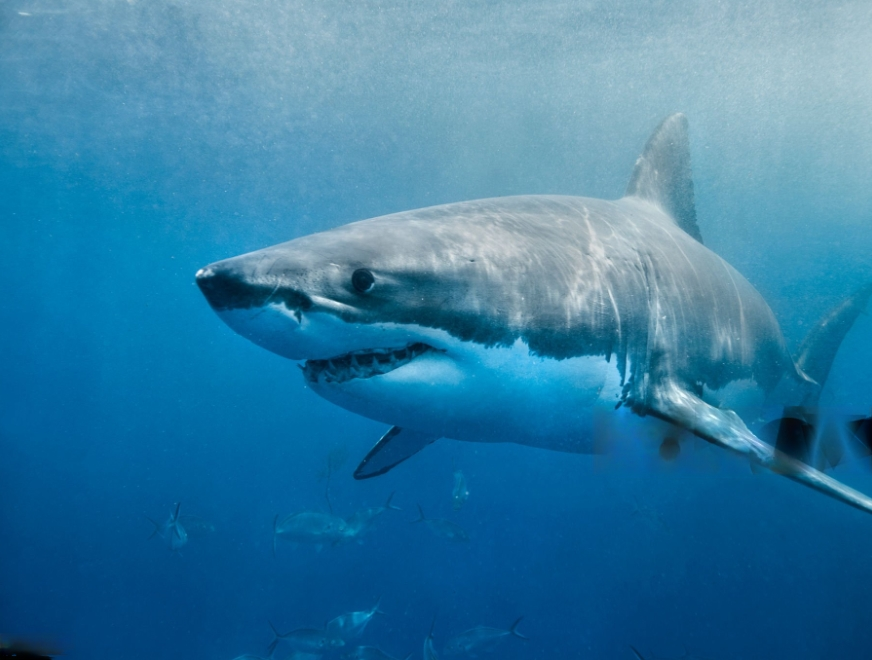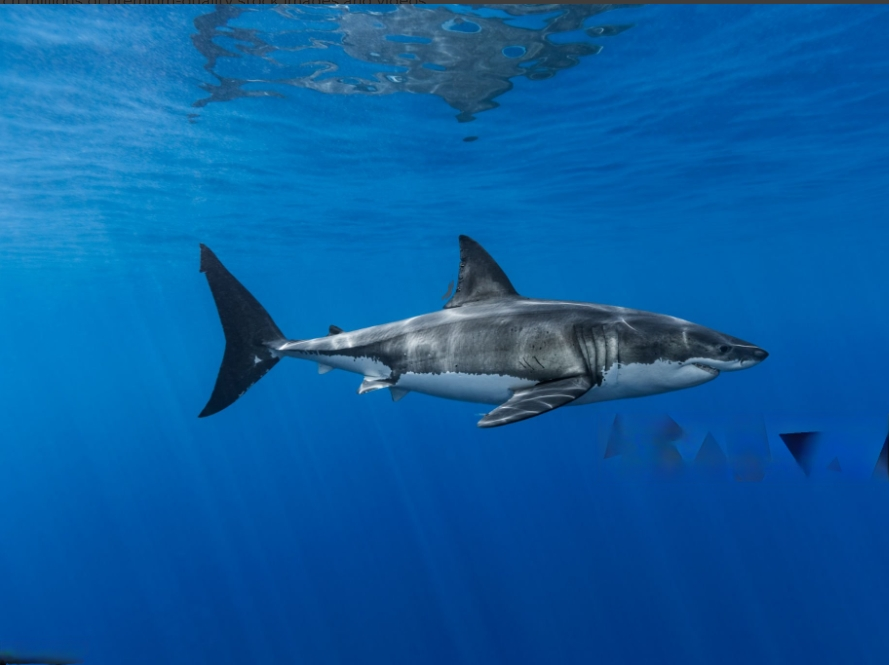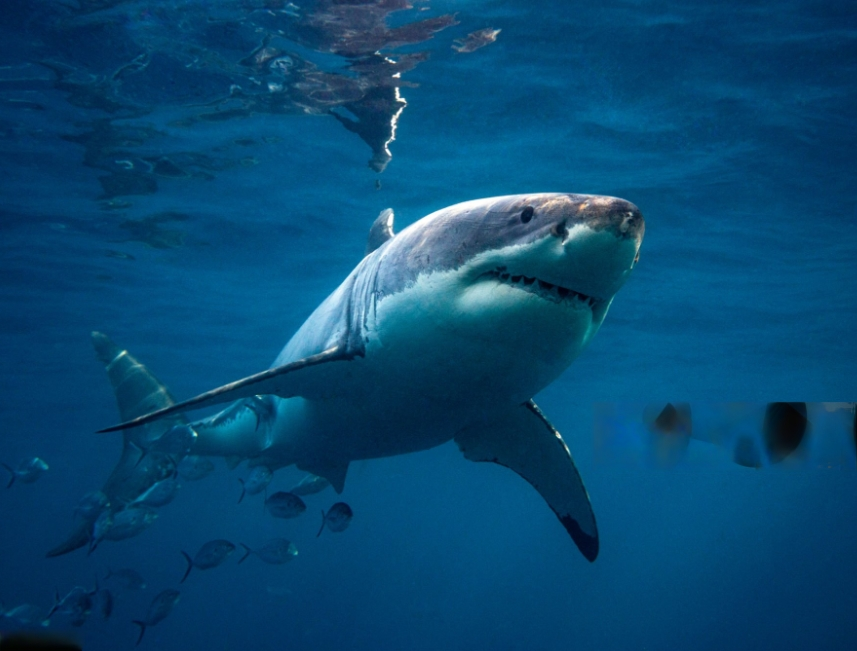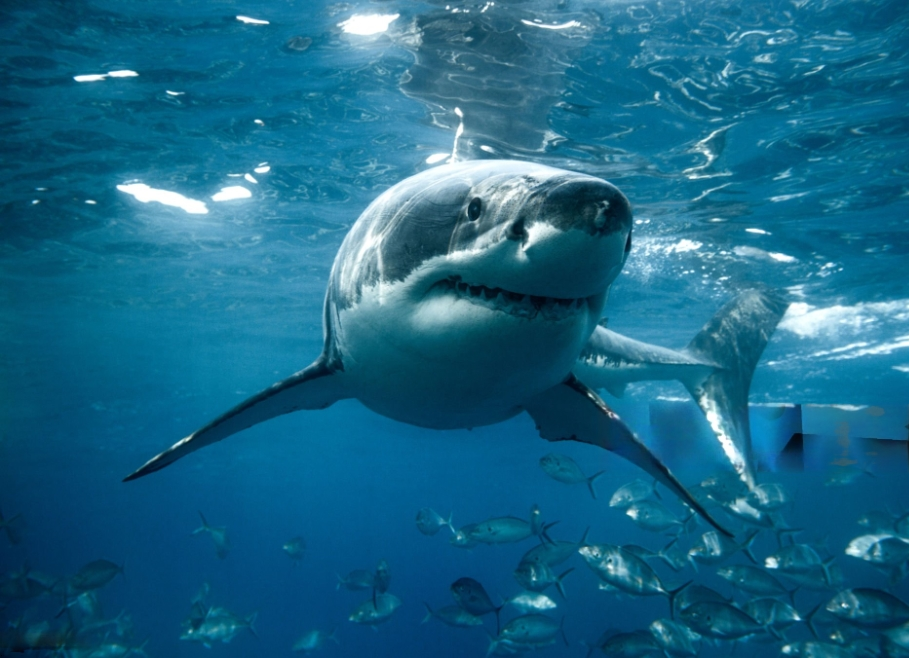Introduction
The great white shark, simply called the white shark, is one of the sea’s most notable and has gotten animals wrong. Known for their sheer size, power, and periodic job as the antagonist in numerous a shark film, these unimaginable hunters assume a critical part in marine biological systems. The various aspects of the great white shark’s life will be examined in this article, including its territory, diet, and some fascinating facts about the largest great white shark ever recorded.

The Enigmatic Great White Shark
What Makes the Great White Shark So Fascinating?
The scientific name for the great white shark is Carcharodon carcharias. It has long captivated human creativity. It should come as no surprise that this shark has achieved an unbelievable status given its size, sharp teeth, and strange appearance. In any case, past the Hollywood portrayals lies a creature of colossal natural and regular importance.
- Size and Power: Great white sharks can grow up to 20 feet in length and weigh over 4,000 pounds. Their powerful bodies and speed make them top predators in the ocean.
- Apex Predator: As an apex predator, the great white shark plays a critical role in maintaining the balance of marine ecosystems by controlling the population of other marine species.
The Habitat of the Great White Shark
Where Do Great White Sharks Live?
Great white sharks are tracked down in seas everywhere, except they favor waterfront waters where the temperature ranges between 12 to 24 degrees Celsius (54 to 75 degrees Fahrenheit). These regions give plentiful food sources and reasonable circumstances for hunting and reproducing.
- Popular Locations: Some of the most well-known habitats include the waters off the coast of South Africa, Australia, California, and Mexico. In particular, places like Shark Alley in South Africa and the Neptune Islands in Australia are famous for their great white shark populations.
- Migration Patterns: Great white sharks are known for their long migrations, often traveling thousands of miles across oceans. These migrations are usually driven by the search for food and breeding grounds.
The Diet of the Great White Shark
What Do Great White Sharks Eat?
The great white shark diet is however changed as it seems to be intriguing. These sharks are pioneering feeders, importance they’ll eat what’s accessible, however, they do have some favored prey.
- Primary Diet: The primary diet of great white sharks includes fish, seals, sea lions, and even small whales. Their hunting strategy involves a stealthy approach followed by a swift, powerful attack.
- Young Sharks: Juvenile great white sharks often feed on smaller fish and rays before graduating to larger prey as they grow.

Largest Great White Shark Ever Recorded
Meet the Giants
While all great white sharks are amazing, people stand apart because of their sheer size. These record-breaking sharks give significant bits of knowledge into the expected size and age these animals can accomplish.
- Deep Blue: One of the largest great white sharks ever recorded is known as Deep Blue. Estimated to be over 20 feet long and weighing around 5,500 pounds, Deep Blue was first spotted off the coast of Mexico’s Guadalupe Island.
- The Lord of the Rings Shark: Another giant great white, nicknamed “The Lord of the Rings Shark,” was estimated to be over 19 feet long. This massive shark was spotted near New Zealand, and its size continues to fascinate researchers and shark enthusiasts alike.
The Role of Great White Sharks in the Ecosystem
Why Are Great White Sharks Important?
Great white sharks play a significant part in keeping up with the soundness of marine biological systems. As dominant hunters, they assist with controlling the populaces of different species, guaranteeing reasonable and various sea climates.
- Population Control: By preying on seals, sea lions, and other marine animals, great white sharks help prevent these populations from growing too large and over-consuming fish stocks.
- Scavengers: Great white sharks also scavenge on dead whales and other large marine animals, helping to recycle nutrients back into the ecosystem.
Myths and Misconceptions
Debunking Common Myths About Great White Sharks
Regardless of their fearsome standing, numerous fantasies and confusions encompass great white sharks. Let’s set the record straight.
- Myth: Great White Sharks Are Man-Eaters: While great white shark attacks on humans do occur, they are extremely rare. Sharks don’t typically see humans as prey; most attacks are cases of mistaken identity.
- Myth: Sharks Are Mindless Killers: Great white sharks are highly intelligent and curious creatures. They often investigate their surroundings and potential prey before attacking.
Conclusion
The great white shark is an animal that deserves a lot of respect and admiration because of its significant presence and essential role in the marine environment. We can more easily appreciate these magnificent hunters if we learn about their habitat, diet, and the real nature of their relationships with humans. We can guarantee that these magnificent animals will continue to be an essential component of our seas for a significant amount of time to come as long as we continue to study and protect the largest great white sharks and their natural environments.

Keep in mind that the great white shark is more than just a Hollywood icon when you think about it the next time you see one. They are focal members in the marine world, meriting our advantage and security.
FAQ’s
How long do great white sharks live?
Great white sharks can live up to 70 years, with females regularly living longer than males.
Are great white sharks endangered?
Great white sharks are delegated helpless, meaning they are in danger of becoming imperiled. Factors, for example, overfishing and living space misfortune add to their declining numbers.
How fast can a great white shark swim?
Great white sharks can swim at rates of up to 25 miles each hour (40 kilometers each hour) while hunting or inciting.
What senses do great white sharks use to hunt?
Great white sharks have astounding feelings of smell and sight. They can identify a drop of blood in the water from up to three miles away and can see in both low light and deep water as well.






